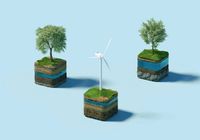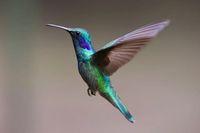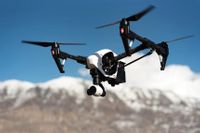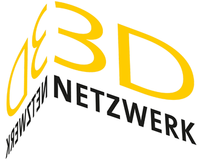Bionics, biomimetics and bioinspiration… What they mean and why they are important to sustainable product innovations with 3D printing
Creating healthy environments in our increasingly urbanized lifestyles...
The terms bionics, biomimetics, bioinspiration, and similar such variations have increasingly been thrown around in conversations surrounding that of sustainable innovation. In light of this, it is necessary that this important new spectrum of study be elucidated so that we understand better its relevance in such endeavours like creating healthy environments in our increasingly urbanized lifestyles. Learning from nature can be a key factor in sustainable product development, for example when it comes to aerodynamics in renewables energies such as wind power.
Biomimetic designs take inspiration from nature
Arguably, the most important dichotomy that needs to be identified is that between the terms bionic/biomimetic and bioinspired. The term Biomimetic was coined by American inventor, engineer, and biophysicist Otto H. Schmitt in 1969 (Bar-Cohen 2006). Although often used interchangeably with biomimetics, the term bionics was conceived earlier in around 1960 by American medical doctor and US Air Force colonel Jack E. Steele and is basically a concatenation of the words: “biology” and “technics” (Louguina 2012). As mentioned, bionics and biomimetics need to be distinguished from other such similar terms like bioinspiration. While bionic/biomimetics has come to mean a replication of the processes or functions of a biological system, considering the inner workings during technological adaptation (Nosonovsky & Bhushan 2009), bioinspiration involves capturing an essential idea underpinning a biological system while not necessarily implementing or mimicking the biological processes that are employed therein. Instead of trying to replicate the inner workings of a biological system, the overarching idea is adapted technologically.
Venn diagram showing the relationship between bioinspired and biomimetic ideas: All biomimetic designs take inspiration from nature and are hence bioinspired but not all bioinspired designs are biomimetic in that they do not necessarily mimic the biological processes contained in the biological system that they have taken inspiration from.
The natural world is an incredible source of inspiration with inventions like flight arising from humankind’s fascination with birds
So why does this matter in the conversation surrounding sustainable innovation? One important reason that comes to mind is that it allows us to distinguish between the employment of sound natural phenomena or marketing gimmicks. If a design is truly biomimetic, we are able to lend credence to the employment of the natural system and in doing so better assess the use of that natural system for solving a real-world technological problem. It also allows us to better assess the understanding of the natural system as it can be argued that the degree to which it is replicated indicates our level of understanding it. That is not to say that bioinspiration needs to be discarded. The natural world has been, since time immemorial, an incredible source of inspiration with inventions like flight arising from humankind’s fascination with birds. Even though modern aircraft hardly resemble their natural counterparts neither in terms of appearance nor in terms of how they fly, we cannot deny the homage that these magnificent inventions pay to our feathery friends.
For our product development at 3D innovaTech, we find ourselves increasingly delving into the conversation of bionics/biomimetics and bioinspiration
At 3D innovaTech, we endeavour to use 3D printing and rapid prototyping for various technological innovations including that of creating healthy indoor spaces. Because we aim to use natural systems like plants and hydroponics, we find ourselves increasingly delving into the conversation of bionics/biomimetics and bioinspiration. The direct use of plants built up in vertical columns to improve air quality in indoor spaces is arguably a direct utilization of what exists in rainforests. Rainforests are colloquially termed the lungs of the planet and are thought to generate approximately 20% of the world’s oxygen (Woodward 2019). Additionally, the trees are essential in reducing pollutants and absorbing carbon dioxide, hence keeping levels within narrow limits. The destruction of large swaths of rainforest is in this regard understandably detrimental in the exacerbation of climate change. At a macro level, rainforests need to be protected and restored in order to ensure that carbon dioxide levels be kept within tolerable limits. Their protection and restoration will also ensure better air quality for the planet at large. On a micro level, indoor spaces can make use of trees and other flora to improve air quality in cities and especially in indoor spaces. Better air quality will undoubtedly improve productivity and the presence of greenery will certainly contribute to a more natural and less stressful work environment where workers are able to feel more in touch with nature. Given how green indoor spaces are a technological adaptation of the natural systems present in rainforests and utilize the underlying biological process, we can argue that our solutions to improving air quality are truly bionic/biomimetic. Here at 3D innovaTech, we look forward to pursuing this exciting new discipline and hope that we can use it to guide us in creating truly futuristic solutions that are also harmonious with nature.
Learning from nature can be a key factor in sustainable product development.
About the author of this article
Yusuf Ismail, Technology Researcher & Bionics Specialist
As technology researcher at 3D innovaTech - Engineering Solutions, our bionics and biomimetics specialist Yusuf Ismail knows the advantages of additive manufacturing perfectly well. Yusuf emphasizes: “Biomimetic designs take inspiration from nature - the natural world is an incredible source of inspiration with inventions like flight arising from humankind’s fascination with birds. For our product development at 3D innovaTech, we find ourselves increasingly delving into the conversation of bionics/biomimetics and bioinspiration”.
Get connected to Yusuf via bionics@3d-innovatech.de or learn more about our engineering team.
Sources mentioned in this article:
1. Bar-Cohen, Y. 2006 Biomimetics--using nature to inspire human innovation. Bioinspiration & Biomimetics 1(1), 1-12.
2. Louguina, A. (2012). Bionics ≠ Biomimetics ≠ Biomimicry. https://biologytodesign.wordpress.com/2012/05/08/design-biology-linguistics/.
3. Nosonovsky, M. & Bhushan, B. 2009 Multiscale effects and capillary interactions
in functional biomimetic surfaces for energy conversion and green engineering. Philosophical Transactions of the Royal Society A 367, 1511-1539.
4. Woodward, A. (2019). The 'lungs of the planet' are on fire. World Economic Forum., https://www.weforum.org/agenda/2019/08/amazon-burning-unseen-rate/.










